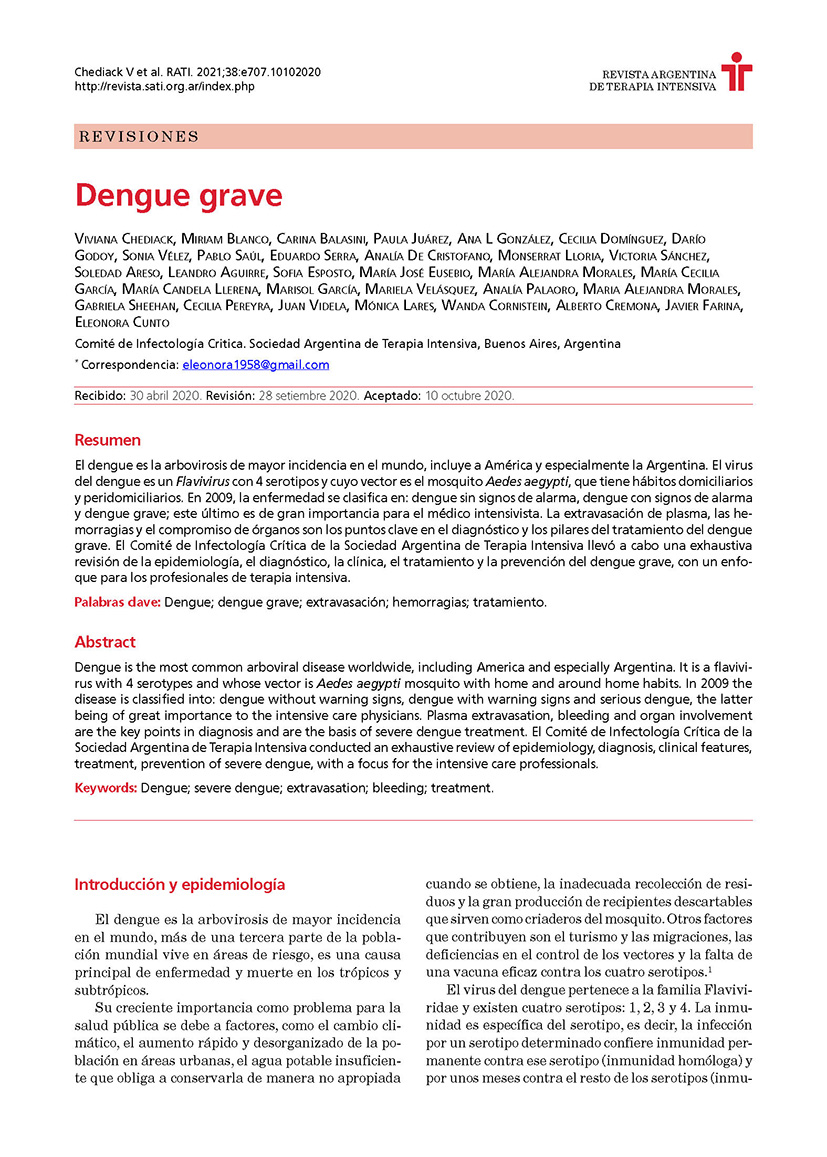Resumen
El dengue es la arbovirosis de mayor incidencia a nivel mundial, incluyendo América y especialmente Argentina. Es un Flavivirus, con 4 serotipos y cuyo vector es el Aedes aegypti, mosquito con hábitos domiciliarios y peri domiciliarios. En el 2009 se clasifica en: dengue sin signos de alarma, dengue con signo de alarma y dengue grave, siendo este último de gran importancia para el medico intensivista. La extravasación de plasma, hemorragias y compromiso de órganos son los puntos clave en el diagnóstico y son los pilares del tratamiento del dengue grave. El Comité de Infectología Critica de Terapia intensiva, realizo una exhaustiva revisión de epidemiologia, diagnóstico, clínica, tratamiento, prevención del dengue grave, con un enfoque para los profesionales de terapia intensiva
La revista no retiene los derechos de reproducción (copyright) por lo que los autores pueden volver a publicar sus trabajos con la sola mención a la fuente original de publicación.

